Women's involvement in global tea production is driving transformative change across traditional communities. While women represent over 50% of tea workers in major producing countries like India and Sri Lanka, they're breaking barriers to reach management positions and lead successful cooperatives. In Tanzania, women-led initiatives have increased income by 546% through value-added processing. Despite persistent challenges, female leaders are reshaping the industry's future through innovation, sustainability, and economic empowerment – inspiring a new chapter in tea's rich heritage.
Key Points
- Women represent over 50% of tea workers globally, yet hold only 14-29% of management positions across major producing countries.
- Success stories like Tamang, Darjeeling's first female factory manager, demonstrate women breaking traditional barriers in tea production.
- Women-led cooperatives have dramatically increased income, with Tanzania seeing a 546% rise through value-added processing.
- Companies like Luxmi Tea and English Tea Shop Organic actively promote women to leadership roles and ensure equal pay.
- Female leadership in tea communities creates positive ripple effects, improving education, healthcare, and economic opportunities for entire regions.
The Current State of Women's Participation in Global Tea Production

While women's participation in global tea production varies considerably by region, they form a substantial portion of the workforce, representing over 50% of tea workers in major producing countries like India and Sri Lanka. The workforce dynamics show significant gender diversity across different regions, with women making up 62% of coffee plantation workers and 53.43% of tea workers in India. However, these numbers are significantly lower in countries like Malawi and Indonesia, where women constitute only 30% of the tea workforce.
Companies like Luxmi Tea are working to change this landscape by establishing women as sardars and supervisors across their estates. Recent trends indicate shifting patterns in employment, particularly in India, where despite maintaining high participation rates, the absolute number of women workers has nearly halved over a decade. This changing landscape reflects broader challenges in the industry, where women continue to be essential contributors despite facing persistent barriers to advancement and equal representation in leadership roles. The pervasive issue of limited access to resources continues to hinder women's economic progress in tea-producing communities.
Breaking Down Gender Barriers: Women's Leadership Statistics in Tea Communities

Although women constitute a majority of tea workers in many regions, their representation in leadership positions remains strikingly low across major tea-producing countries. Recent data shows concerning disparities, with women holding only 24.8% of managerial positions in Kenya, 15.6% in Malawi, and 28.6% in Rwanda. India lags even further behind at 14.6%.
These statistics reflect deep-rooted gender biases and leadership barriers that prevent women from advancing in the tea industry. Women are often excluded from high-level meetings and important decision-making processes, perpetuating their limited roles. Despite making up over 50% of the workforce in places like Assam and Sri Lanka, women face persistent obstacles including limited education opportunities, traditional social norms, and workplace discrimination. Studies show women particularly struggle with poor working conditions in tea gardens. With approximately 70% female workers in tea plantations by 1971, the industry became India's largest employer of women, yet this majority workforce status did not translate to improved working conditions or career advancement. This underrepresentation in management poses a significant challenge, as research indicates that empowering women in leadership roles can lift entire communities out of poverty and drive sustainable economic growth.
Key Challenges Facing Women in Tea-Growing Regions
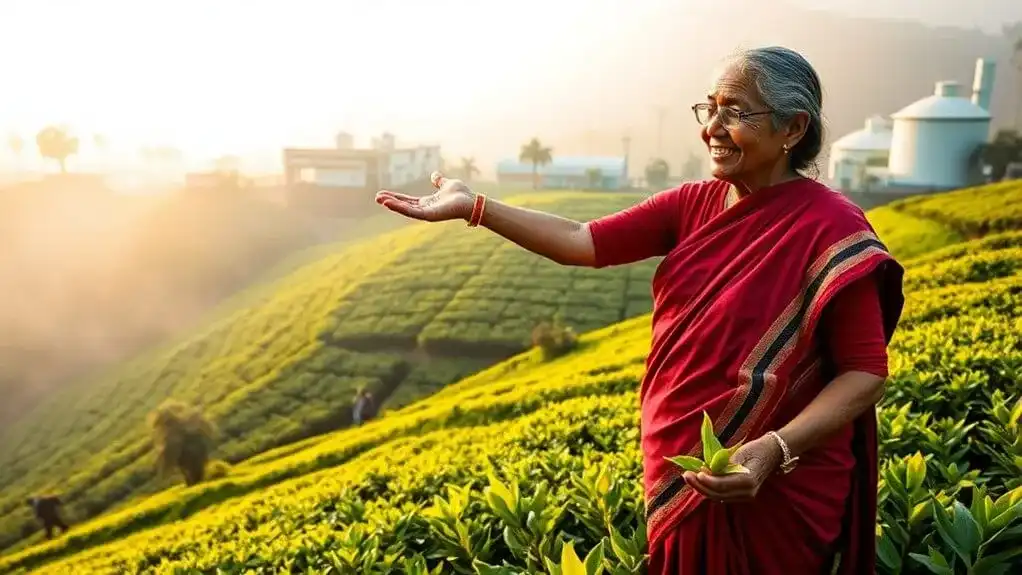
Despite significant contributions to the tea industry, women in tea-growing regions face interconnected challenges that perpetuate cycles of poverty and inequality. Limited resource accessibility affects their access to education, healthcare, and financial services, while discriminatory practices result in wage disparities and exclusion from decision-making processes.
The demanding physical labor of tea leaf plucking requires exceptional skill and endurance, yet women rarely receive adequate compensation for their expertise. Women tea workers often struggle with severe health issues, including anemia and malnutrition, which are exacerbated by poor working conditions and inadequate healthcare facilities. They're also disproportionately affected by climate change impacts and face higher risks of violence, trafficking, and child marriage within their communities. Single mothers make up a significant portion of tea pickers and face additional hardships supporting their families on meager incomes.
While empowerment initiatives are emerging to address these challenges, systemic barriers continue to hinder progress. Collaboration with NGOs and community organizations remains vital for implementing sustainable solutions that promote gender equity and improve women's socioeconomic conditions in tea-growing regions.
Success Stories: Female Tea Workers Rising to Management

In recent years, several pioneering women have shattered traditional barriers in the tea industry by ascending to management positions. Tamang's groundbreaking role as one of Darjeeling's first female factory managers exemplifies this shift, as she entered the industry through education rather than family connections. The manual plucking process remains a cornerstone of maintaining quality in Darjeeling's prestigious tea production.
Companies like English Tea Shop Organic and Siddha Devi tea estate are leading empowerment initiatives by providing equal pay, career advancement opportunities, and extensive support systems. Their leadership training programs have greatly increased women's representation in management roles. These companies have demonstrated that employee ownership models create stronger engagement and commitment to success. Siddha Devi's 99-percent female workforce demonstrates the industry's transformation, while English Tea Shop Organic offers practical solutions like flexible schedules, transportation, and childcare benefits to support women's career growth. At Siddha Devi, inspirational leaders like Andrew Gardner mentor and protect young women while emphasizing work satisfaction and success. These success stories prove that when given proper resources and opportunities, women can excel in leadership positions while driving innovation and sustainability in the tea sector.
The Economic Impact of Women's Involvement in Tea Production
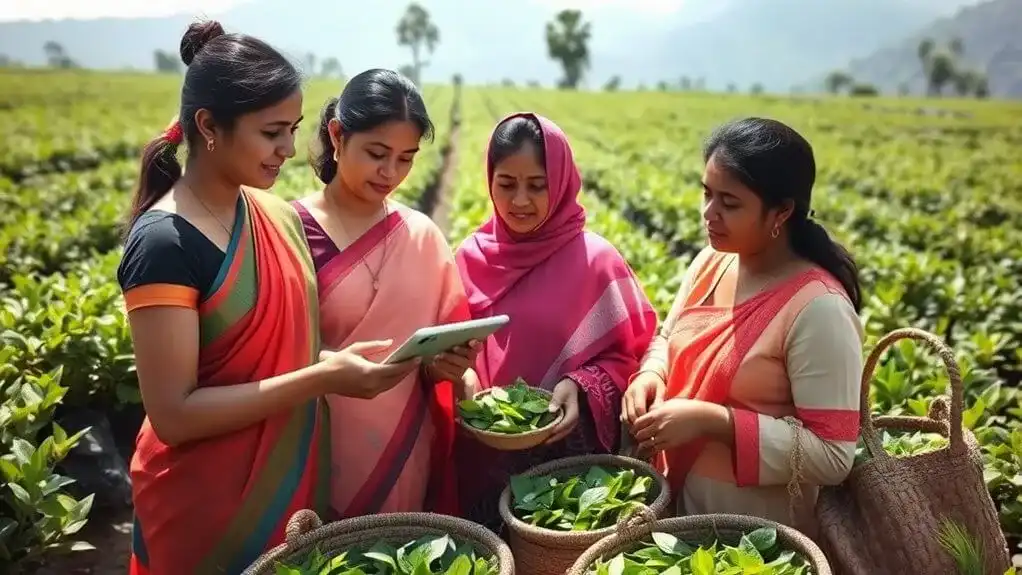
Women's involvement in tea production has transformed the economic landscape of tea-growing regions, particularly in Tanzania where women-led cooperatives have achieved remarkable success. These cooperatives have increased income by an astounding 546 percent through value-added processing compared to selling raw tea leaves.
The economic empowerment of women in the tea industry has created ripple effects throughout their communities. With improved market access through partnerships like Kazi Yetu and the new Tea Auction in Tanzania, women farmers now have reliable channels to sell their products. The government's commitment to building more processing factories has further strengthened these initiatives. Additionally, women's increased participation in tea processing and packaging has helped develop Tanzania's specialty tea market, while the recent 17 percent increase in green leaf tea prices benefits all farmers.
Healthcare and Education: Critical Issues for Women in Tea Communities
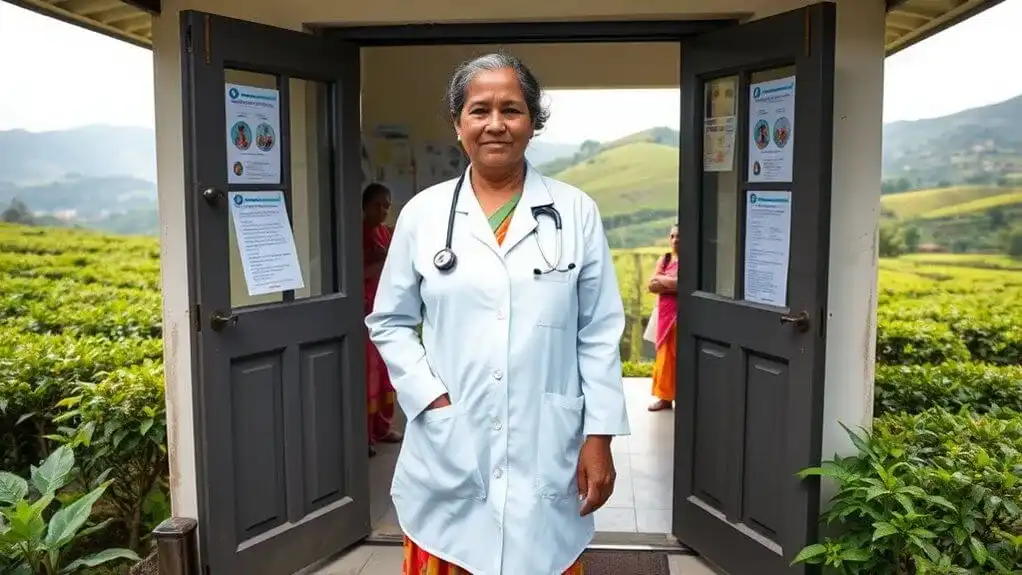
While economic gains in tea production have been substantial, healthcare and educational challenges continue to plague women in tea-growing communities. Limited healthcare access remains a critical concern, with 51% of female workers in Bangladesh facing severe health risks and inadequate medical facilities in tea garden hospitals. The high prevalence of early marriages has led to 46% of adolescents being affected by child marriage in these regions. Women workers receive below minimum wages and struggle to afford basic necessities, let alone healthcare services. Recent studies indicate that tea garden workers must travel two hours to Silchar for advanced medical treatment, further complicating their access to healthcare.
Key challenges include:
- Universal anemia and high maternal mortality rates among women in tea plantations
- Lack of specialized doctors and tertiary care services in garden hospitals
- Limited access to education and low literacy levels among female workers
Education initiatives through organizations like the Ethical Tea Partnership are working to address these issues by providing training and legal capacity building. Despite the availability of public health facilities near tea gardens, financial constraints and lack of awareness often prevent women from accessing these services.
Bridging the Gender Gap: Strategies for Promoting Female Leadership
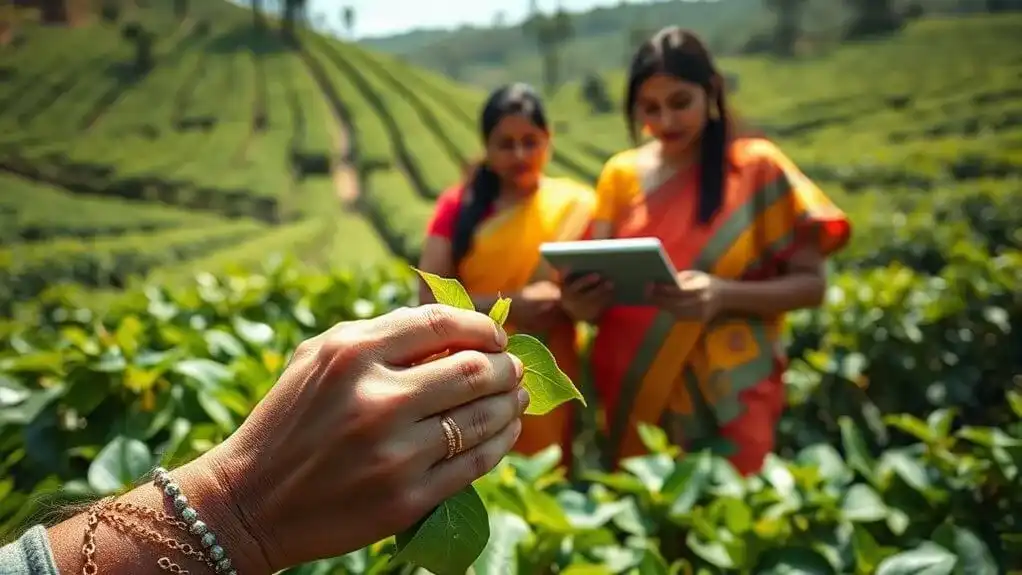
Addressing the healthcare and education challenges faced by women in tea communities has paved the way for broader initiatives focused on female leadership and career advancement. Companies like English Tea Shop Organic are leading the change by implementing equal pay policies and creating mentorship programs to boost women's representation in management positions.
The industry's transformation includes thorough gender training and flexible work arrangements that help women balance their professional and personal lives. Organizations like ETP partner with Women Win to develop transformative leadership opportunities, while IDH's Gender Empowerment Platform facilitates collaboration between tea companies and civil society groups. Through transparent leadership structures and community development forums, women are gaining more influence in decision-making processes. These initiatives are breaking down traditional barriers and fostering an environment where female leaders can thrive.
The Future Outlook: Opportunities for Women's Advancement in Tea Industry
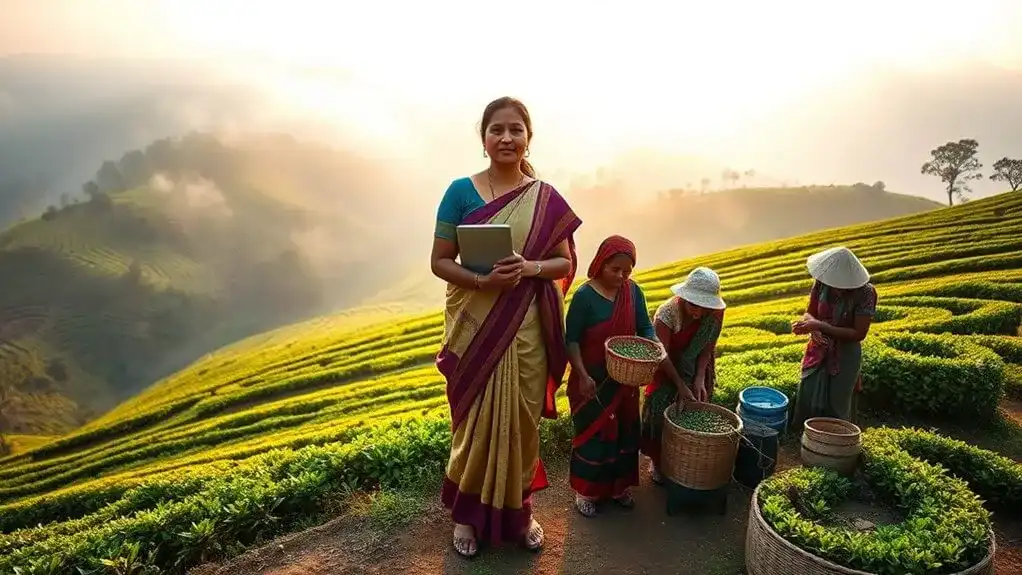
The future of the tea industry holds promising opportunities for transformative change as forward-thinking companies implement extensive training programs and entrepreneurship initiatives. Women are gaining access to essential business skills and mentorship programs that enable them to establish successful tea enterprises and advance into leadership positions.
Though women have historically been limited to tea plucking roles, industry leaders now recognize the importance of elevating women to decision-making positions.
Key developments shaping women's advancement include:
- Specialized training sessions focusing on sustainable tea production and organic farming methods
- Community-based support networks fostering collaboration and knowledge-sharing among female entrepreneurs
- Industry-wide initiatives breaking down gender stereotypes and promoting women in executive roles
These shifts are creating a more inclusive tea industry where women can thrive as business owners and leaders. With increased visibility and support, women are positioned to drive innovation and sustainability while building economic independence through tea entrepreneurship.
Conclusion
The rise of women in tea production isn't just changing individual lives – it's transforming entire communities. By an extraordinary coincidence, the regions with the highest percentage of female leadership are now showing the strongest economic growth and social progress. While challenges remain, women's increasing influence in the tea industry signals a promising future where tradition and progress blend as naturally as the perfect cup of tea.

